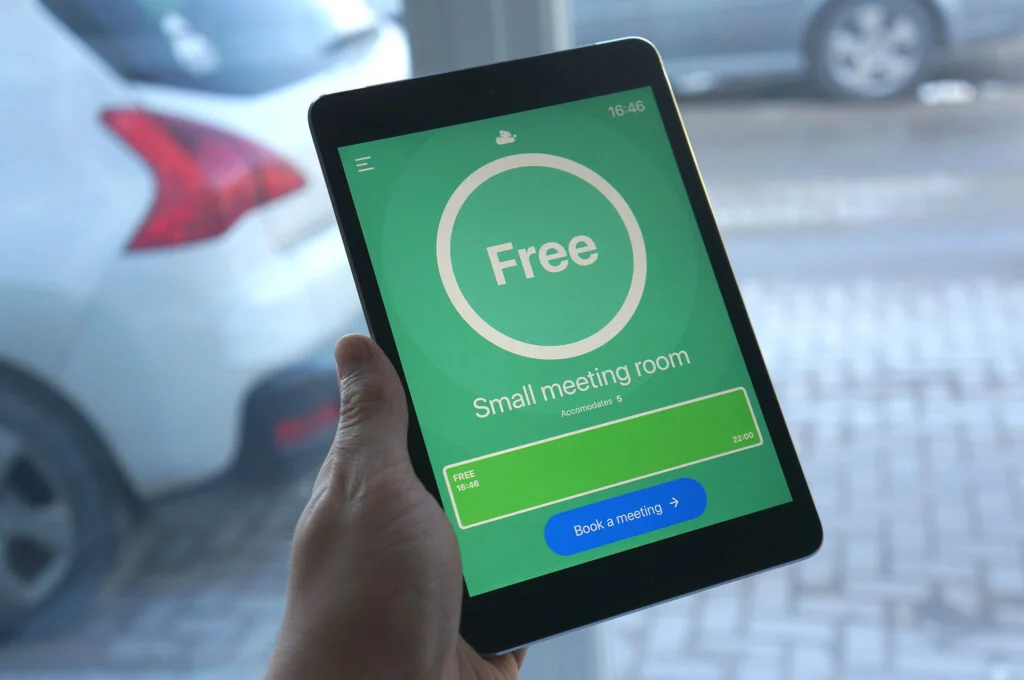Efficient management of meeting spaces is essential for fostering collaboration and productivity within any organization. Yet, many companies stumble over common pitfalls when it comes to scheduling, leading to wasted time, double bookings, and unnecessary frustration. Let’s delve into these mistakes and explore practical solutions to enhance your meeting room booking process.
1. Relying on Outdated Meeting Room Booking Methods
One of the most prevalent mistakes is sticking to antiquated systems like spreadsheets or physical calendars for scheduling. These manual methods are prone to errors, lack real-time updates, and often result in overlapping bookings or vacant rooms that appear occupied.
Solution: Embrace a digital meeting room booking system that offers real-time availability and seamless integration with employees’ calendars. Such systems reduce scheduling conflicts, automate notifications, and allow for easy modifications, ensuring that everyone is on the same page.
2. Neglecting the Use of Meeting Room Displays
Without clear indicators of room occupancy, employees may interrupt ongoing meetings or waste time searching for available spaces. The absence of visible scheduling information leads to confusion and disrupts workflow.
Solution: Implementing meeting room display outside each conference room provides immediate visibility into the room’s status. These digital signs show current and upcoming meetings, making it easy for staff to identify available spaces at a glance. By utilizing meeting room displays, companies can minimize interruptions and optimize room utilization.
3. Overlooking Desk Booking in Flexible Work Environments
With the rise of hot-desking and remote work, failing to manage individual workspaces effectively can create chaos. Employees might struggle to find available desks, leading to lost time and decreased productivity.
Solution: Introduce a desk booking system that allows employees to reserve workstations as needed. This approach not only ensures that everyone has a place to work but also helps in tracking space utilization. Desk booking platforms often come with user-friendly apps, making it convenient for staff to book on the go and adapt to changing schedules.
4. Lack of Clear Scheduling Policies and Procedures
Even with the right tools in place, unclear or non-existent policies can lead to misuse and confusion. Without guidelines, employees may not know how to properly reserve spaces, cancel bookings, or report issues.
Solution: Develop and communicate clear scheduling policies. Provide training on how to use booking systems effectively, and establish protocols for cancellations and no-shows. Clear procedures create a culture of accountability and respect for shared spaces.
5. Ignoring Integration with Existing Systems
Using stand-alone scheduling tools that don’t integrate with existing software can create silos of information and additional administrative work. Disconnected systems lead to inefficiencies and errors in booking management.
Solution: Choose scheduling solutions that integrate with your current office software, such as email platforms and calendar applications. Integration ensures seamless synchronization of information, reduces duplication of effort, and enhances overall efficiency.
6. Failing to Analyze Usage Data for Continuous Improvement
Without monitoring how meeting rooms and desks are utilized, companies miss out on opportunities to optimize space and resources. Ignoring usage patterns can lead to underutilized areas or overcrowded spaces.
Solution: Utilize analytics provided by your booking systems to gain insights into space utilization. Analyze data on peak booking times, most-used rooms, and no-show rates. This information can inform decisions on resource allocation, room sizes, and even office layout adjustments.
7. Overcomplicating the Booking Process
Complex or unintuitive booking systems deter employees from using them effectively. If the process is cumbersome, staff may revert to informal methods, leading to the very issues the system was meant to resolve.
Solution: Opt for user-friendly booking platforms with intuitive interfaces. Simplify the steps required to reserve a room or desk, and provide support resources or training sessions. A streamlined process encourages adoption and consistent use.
Conclusion
Addressing these common mistakes is pivotal for creating a harmonious and productive work environment. By upgrading to modern meeting room booking systems, leveraging meeting room displays, and incorporating desk booking solutions, companies can significantly enhance operational efficiency. Establishing clear policies, integrating with existing systems, and making data-driven decisions further solidify the effectiveness of your scheduling processes.
Investing in these areas not only solves immediate scheduling challenges but also contributes to a more collaborative and agile organization. As workplaces continue to evolve, staying ahead with efficient scheduling practices ensures that your company remains adaptable and employees feel supported in their daily tasks.




